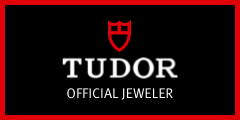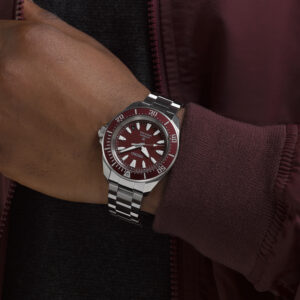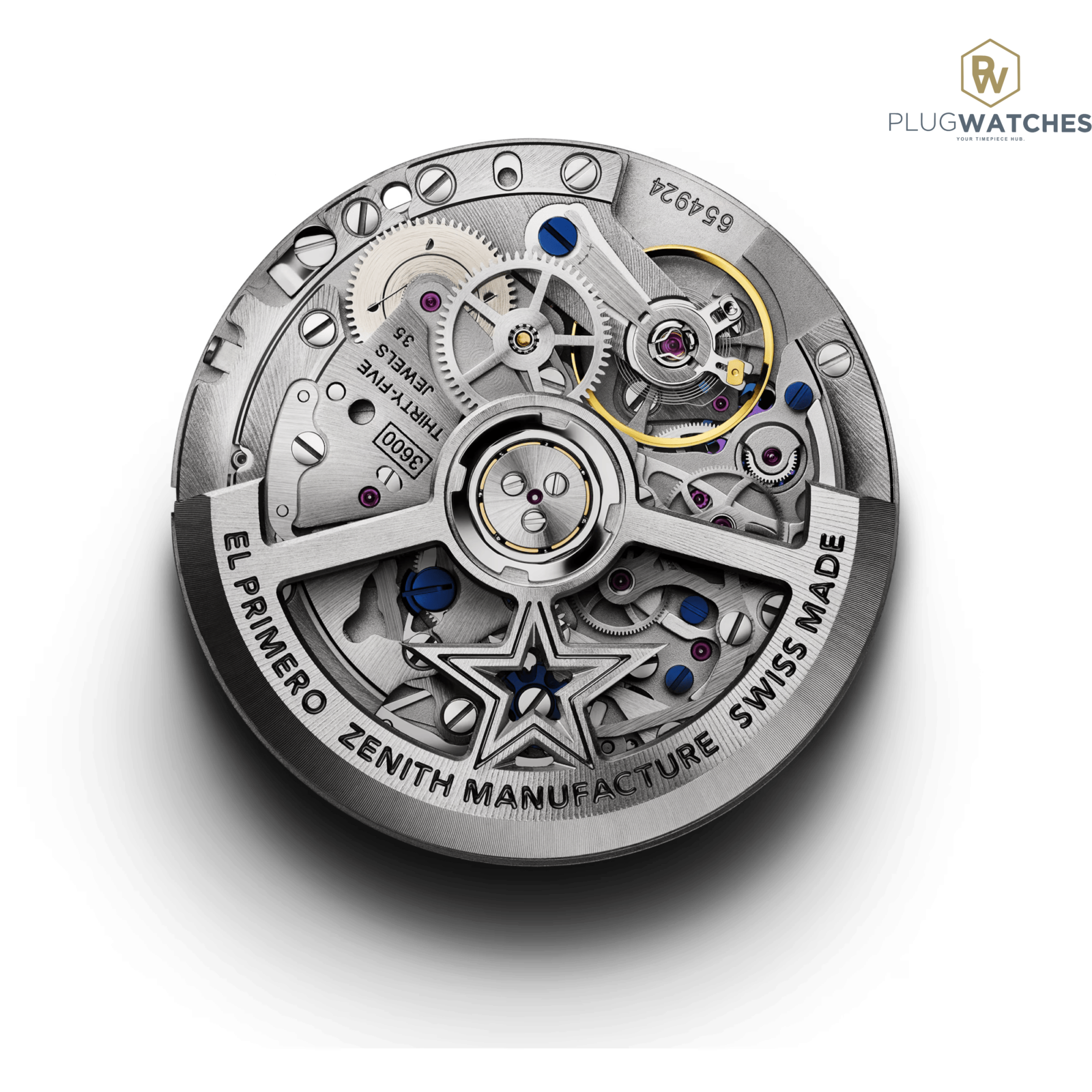ZENITH CHRONOMASTER OPEN 03.3300.3604/69.C823
$17,750.00
The CHRONOMASTER Open offers a view of the beating heart of the El Primero movement from the dial. Crafted in a sleek 39.5mm steel case, this version features a matte silver dial with tricolour counters and a transparent counter for the running seconds, paired with a blue cordura-effect rubber strap. Powered by the El Primero 3604 1/10th of a second automatic chronograph movement.
THE HEART OF PRECISION
Pioneering movements deserve to stand out in inspired and unprecedented designs to truly highlight their ingenuity. The new CHRONOMASTER Open exposes the beating heart of its El Primero 1/10th of a second chronograph calibre in a novel and unexpected way, while retaining the signature tricolour counters dial configuration. It reveals the high-frequency beating heart of the watch, with the escape wheel and pallet lever crafted in lubricant-free silicon.
- Collection: Chronomaster Open
- Case Material: Steel
- Case Size: 39.5mm
- Bezel: Fixed, Steel
- Dial: Silver matte
- Crystal: Sapphire
- Strap/Bracelet: Blue cordura-effect rubber strap
- Movement: Automatic, El Primero 3604
- Calibre: 1/10th sec Chronograph
- Power Reserve: approx. 60 hours
- Water resistance: 100 meters
Discover more from PlugWatches
Subscribe to get the latest posts sent to your email.









Reviews
There are no reviews yet.